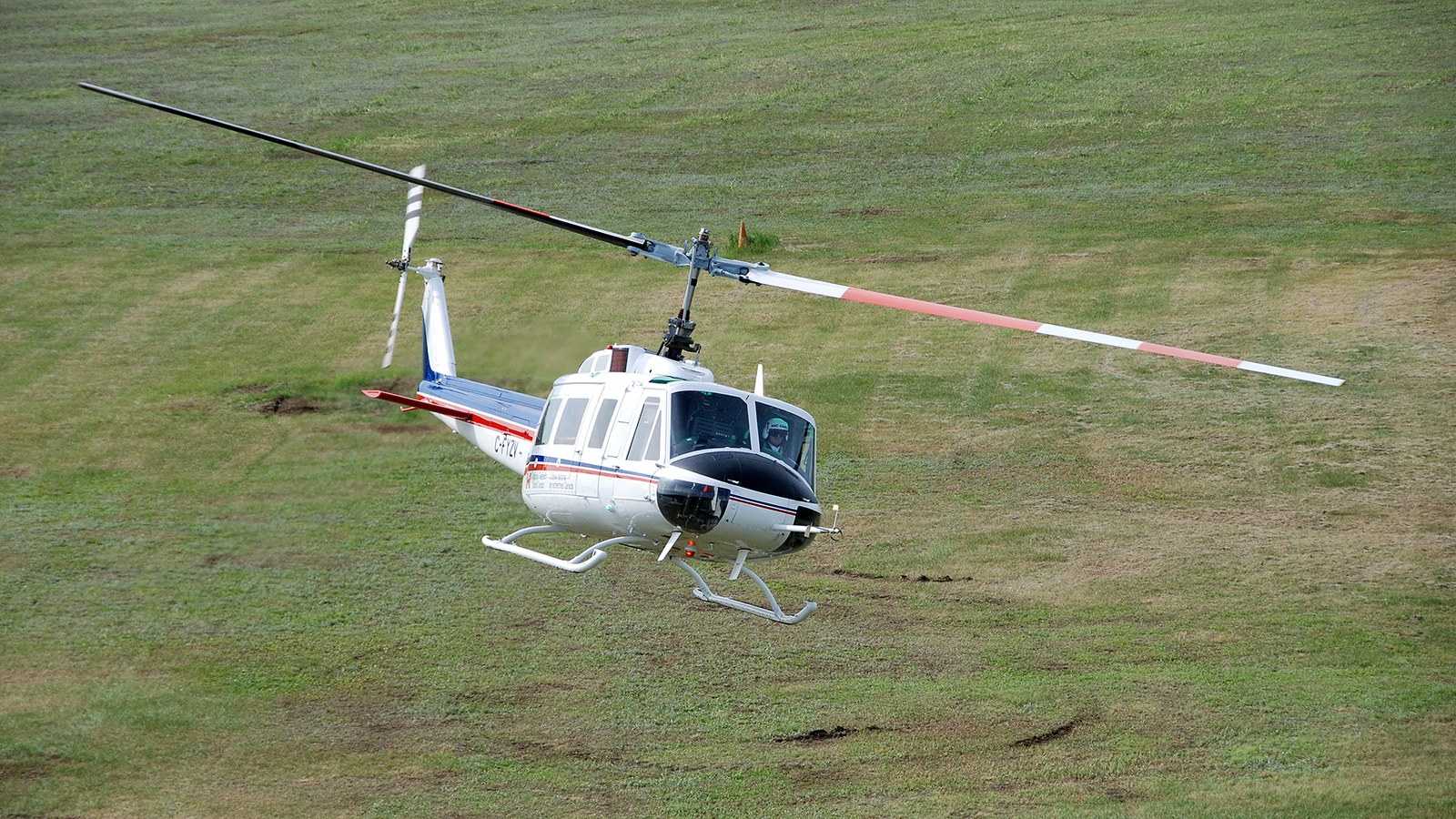Interaction between pilot and helicopter – detection, evaluation and avoidance of pilot induced oscillations



- DLR and NRC test the effectiveness of new methods for detecting pilot induced oscillations.
- System can identify when a helicopter threatens to enter critical oscillation regime.
- Tests in the AVES helicopter simulator and during flight tests.
- Focus: Aeronautics, helicopter research
Helicopters have a very sophisticated and complex flight control system. This results in special requirements for the interaction between pilot and helicopter. This is particularly necessary for the avoidance of what are referred to as Pilot Induced Oscillations (PIOs), where the helicopter starts to oscillate after certain control inputs from the pilot. The German Aerospace Center (Deutsches Zentrum für Luft- und Raumfahrt; DLR), together with the Canadian National Research Council (NRC), has conducted flight tests to confirm the effectiveness of new methods for detecting and assessing PIOs in helicopters.
Sophisticated helicopter control
Compared to fixed-wing aircraft, rotorcraft have unique capabilities – they can take off and land vertically and hover. For this reason, rotorcraft are used in a fundamentally different way than fixed-wing aircraft. Typical mission scenarios for their demanding flight manoeuvres are search and rescue operations on land, in the mountains and over water, as well as transporting personnel to offshore wind turbines or oil and gas platforms. Helicopters are also used for the transport and highly accurate placement of loads in hard-to-reach areas or on high-rise buildings. "These missions almost always involve taking off and landing in unfamiliar terrain and with limited space, flying close to the ground and, in particular, hovering, taking off and landing in close proximity to obstacles," says Marc Höfinger, Head of the Rotorcraft Department at the DLR Institute of Flight Systems. Pilots must be able to control a helicopter very precisely and reliably in these demanding situations.
PIOs during such manoeuvres are always disconcerting for the pilot. Although these oscillations are not necessarily dangerous, they can be amplified by biodynamic coupling with the pilot's flight control inputs. "To stop the oscillations, the pilot needs to briefly release the controls, which is not an intuitive action when in close proximity to the ground or surrounding obstacles," explains Michael Jones, also from the DLR Institute of Flight Systems. "It is precisely in such a critical situation that a pilot's first reaction is not to briefly let go of the flight controls, but to attempt to regain control of the helicopter by interacting with them even more strongly," says Jones. However, this does not lead to the desired decaying effect, but can, in the worst case, increase the oscillations.
Using algorithms to prevent oscillations
In order to prevent such scenarios, DLR researchers have developed a method that provides information about the susceptibility of a helicopter to these oscillation effects. To do this, an algorithm compares the pilot's control inputs with the helicopter's reactions. Based on certain characteristics and how they change in relationship to control inputs and reactions, the system can identify when the helicopter threatens to enter critical oscillations.
Extensive tests in a simulator and in real flight
This method was first tested using the DLR Air Vehicle Simulator (AVES), with the participation of a test pilot from NRC. The limits of the associated criteria were defined. In the next step, the method was tested in flight using the NRC Canada Bell 205 helicopter, the flight characteristics of which can be modified. This allowed the researchers to investigate the influence of pilot control inputs on a helicopter with slower flight characteristics compared to a more agile helicopter. The pilots performed various flight manoeuvres. In addition to a large number of other manoeuvres these included, for example, the fastest possible transition from forward flight to precise hovering flight, for which large control inputs from the pilot are required, as well as a 'lateral offset', in which the pilot uses very precise control inputs to change the helicopter's horizontal position. Various configurations were set up in flight, and the method and the previously defined limits of the criteria were tested against these configurations. Several researchers and a test pilot from DLR were involved in the flight tests at NRC Canada.
The criteria that have been developed offer several advantages. For example, the possible occurrence of potentially dangerous oscillation effects can already be detected during the development phase of a helicopter. In addition, existing helicopters can be evaluated with regard to their susceptibility to these effects, and even only slight oscillations of this type can be detected in flight and corrected in sufficient time.
